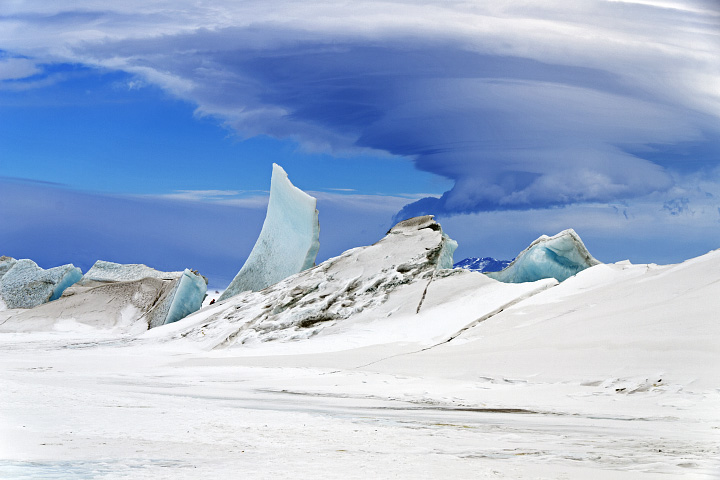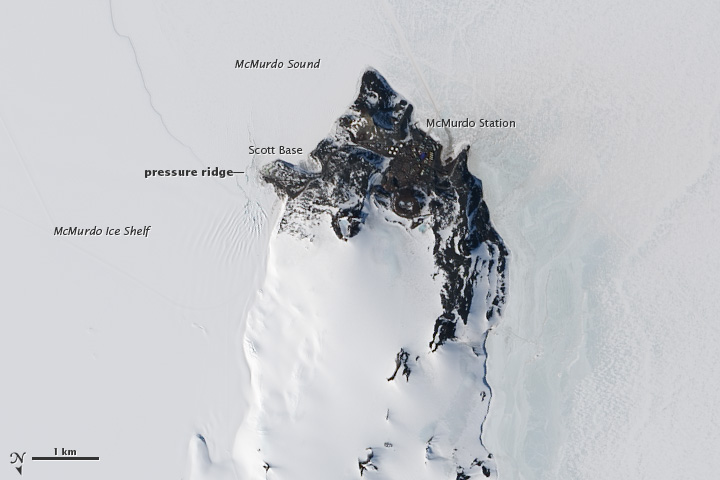NASA: Antartica - Antartida - Wonders in the Antarctic Sea and Sky - 12.16.13
Posted by Ricardo Marcenaro | Posted in NASA: Antartica - Antartida - Wonders in the Antarctic Sea and Sky - 12.16.13 | Posted on 14:46

acquired November 24, 2013
download large image (4 MB, JPEG, 4928x3264)

acquired November 30, 2013
download large image (5 MB, JPEG, 6456x6456)
acquired November 30, 2013
download GeoTIFF file (39 MB, TIFF)
NASA aircraft and scientists have
returned to the United States after a short ice-surveying mission to
Antarctica. Despite having only a week of flying time, the team returned
with crucial scientific data and a trove of spectacular aerial photographs.
The flights over Antarctica were part of Operation IceBridge, a multi-year mission to monitor conditions in Antarctica and the Arctic until a new ice-monitoring satellite, ICESat-2, launches in 2016. ICESat-1 was decommissioned in 2009, and IceBridge aircraft have been flying ever since.
Previous Antarctic IceBridge flights took off from Punta Arenas, Chile, but this time NASA’s P-3 took off from the sea ice runway at McMurdo Station, a first for the team. Operated by the National Science Foundation,
the station is located on Antarctica’s Ross Island. Flying from McMurdo
meant the IceBridge team was able to survey some areas that were
unreachable from Chile.
In 43 hours across five science flights
in late November, the P-3 collected more than 20,000 kilometers (12,000
miles) worth of science data. Instruments gathered information about
the thickness of the ice over subglacial lakes, mountains, coasts, and
frozen seas.
Laser altimeter and radar data are the primary products of the
mission, but IceBridge project scientist Michael Studinger almost always
has his digital camera ready as well. On November 24, 2013, he took the
top photograph of a multi-layered lenticular cloud
hovering near Mount Discovery, a volcano about 70 kilometers (44 miles)
southwest of McMurdo. The Operational Land Imager (OLI) on Landsat 8 captured a wider satellite view (second image) of McMurdo and New Zealand’s nearby Scott Base on November 30, 2013.
Lenticular clouds are a type of wave cloud.
They usually form when a layer of air near the surface encounters a
topographic barrier, gets pushed upward, and flows over it as a series
of atmospheric gravity waves. Lenticular clouds form at the crest of the waves, where the air is coolest and water vapor is most likely to condense into cloud droplets. The bulging sea ice in the foreground is a pressure ridge, which formed when separate ice floes collided and piled up on each other.
See more photography from the 2013 Antarctic IceBridge campaign here and here. Read a blog about the campaign on our Notes from the Field page.
Further Reading
- NASA IceBridge. Accessed December 4, 2013.
NASA Earth Observatory images by Jesse Allen and Robert Simmon, using Landsat 8 data from the USGS Earth Explorer. Photograph courtesy of Michael Studinger. Caption by Adam Voiland.
- Instrument:
- Landsat 8 - OLI
NASA: Antartica - Antartida - Wonders in the Antarctic Sea and Sky - 12.16.13
Ricardo M Marcenaro - Facebook
Blogs in operation of The Solitary Dog:
Solitary Dog Sculptor:
http://byricardomarcenaro.blogspot.com
Solitary Dog Sculptor I:
http://byricardomarcenaroi.blogspot.com
Para:
comunicarse conmigo,
enviar materiales para publicar,
propuestas comerciales:
marcenaroescultor@gmail.com
For:
contact me,
submit materials for publication,
commercial proposals:
marcenaroescultor@gmail.com
My blogs are an open house to all cultures, religions and countries. Be a follower if you like it, with this action you are building a new culture of tolerance, open mind and heart for peace, love and human respect.
Thanks :)
Mis blogs son una casa abierta a todas las culturas, religiones y países. Se un seguidor si quieres, con esta acción usted está construyendo una nueva cultura de la tolerancia, la mente y el corazón abiertos para la paz, el amor y el respeto humano.
Gracias :)


Comments (0)
Publicar un comentario